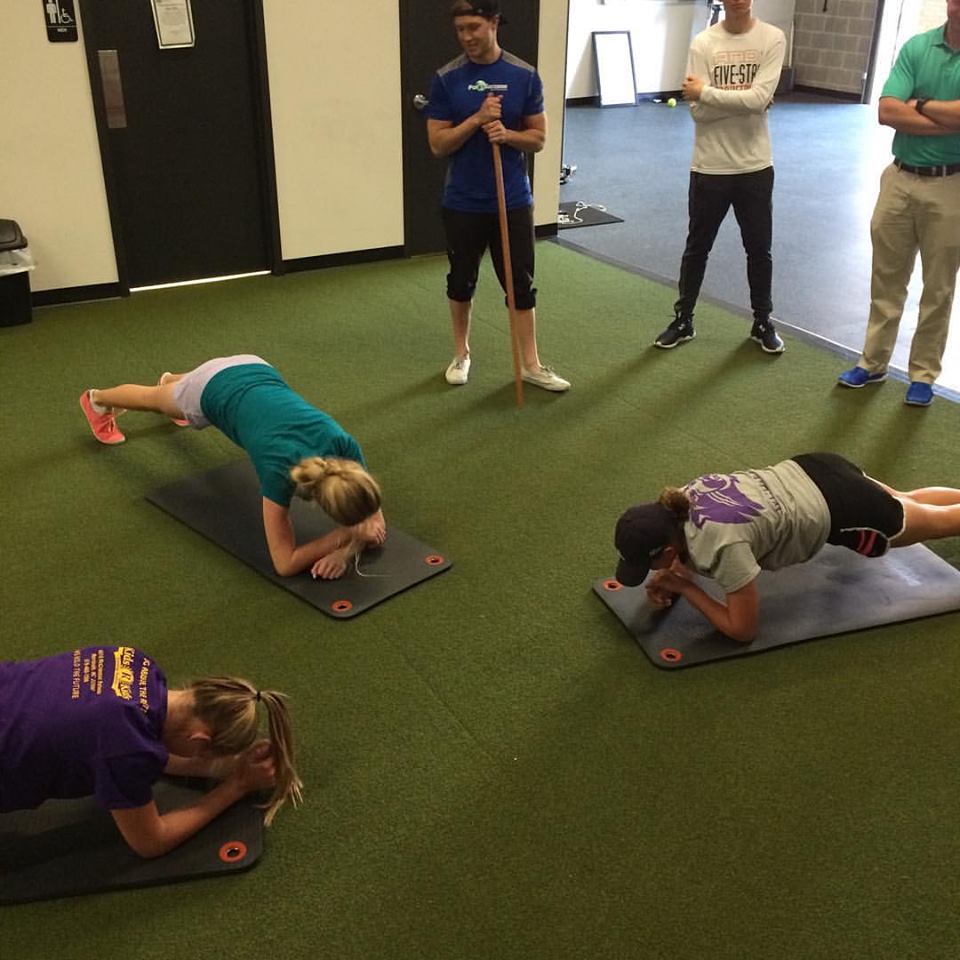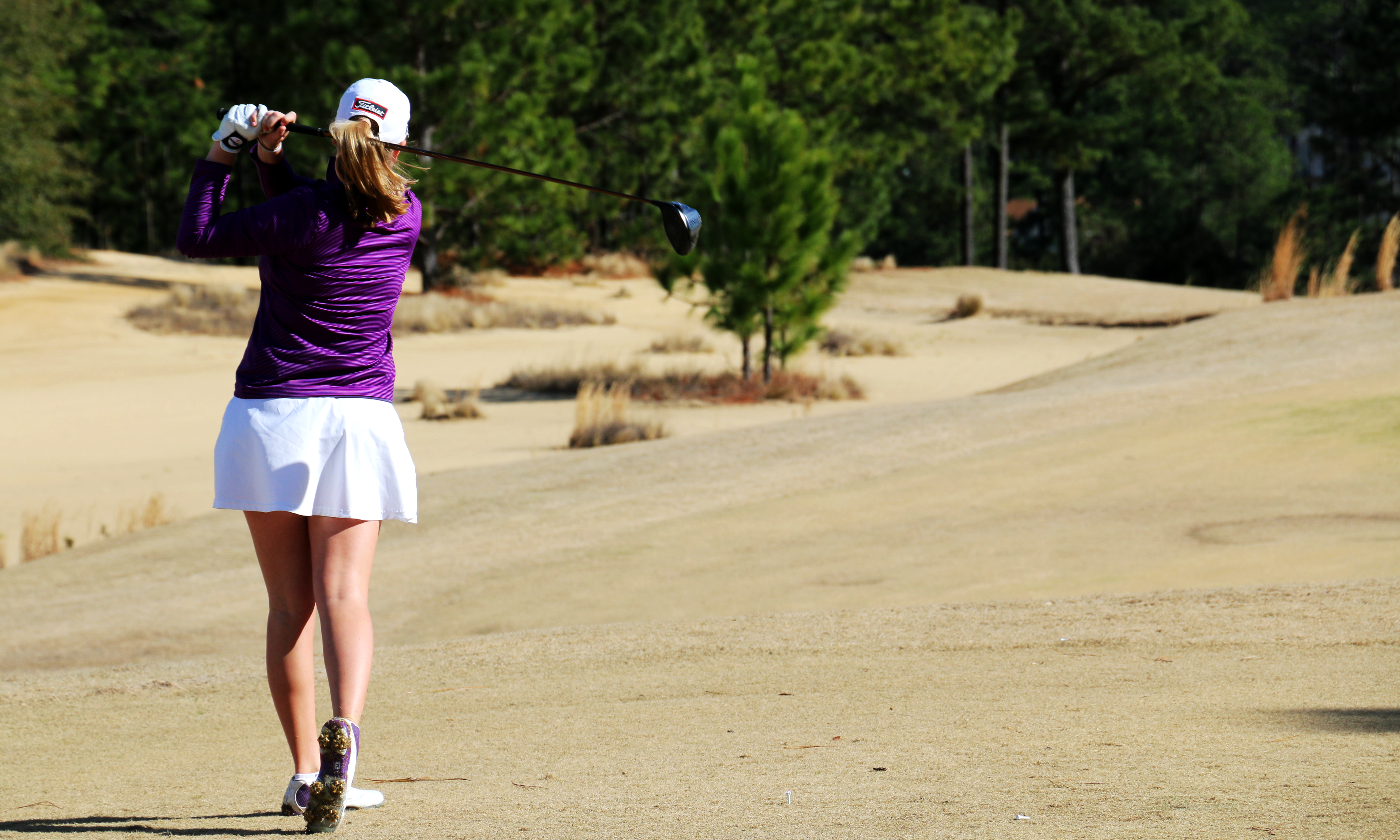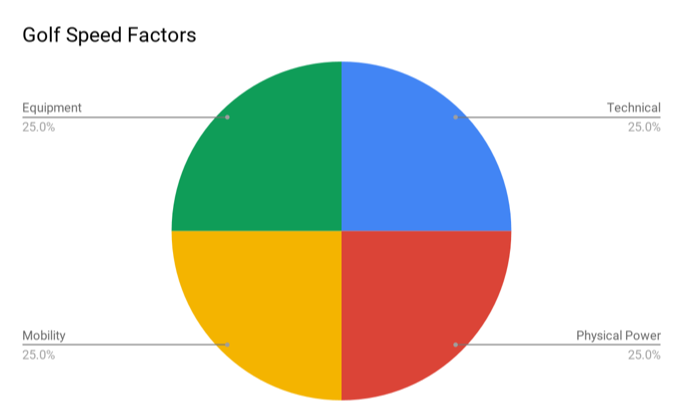There are so many exercises that a junior golfer can choose from when designing their workouts that it is overwhelming. Just of all the exercises, in the past year, that have been demonstrated in magazines, on television and, of course, on YouTube and anywhere else you consume your social media. The crazy thing is that these outlets probably don’t even combine to create an exhaustive list!
So how, you may be wondering, from all those options could there possibly only be three exercises that junior golfers do wrong most often? The answer is multifaceted.
First, junior golfers as a whole are not told “why” the exercises being done are useful. Many of us just pick out what the latest exercise we saw the newest world number one doing and assume that if it is good for them, it is good for us.
Second, golfers often are not given a solid explanation of how they should correctly be doing the exercises they select. This is a dangerous one that often leads to injury. Finally and most importantly, many golfers don’t take the time to figure out or ask if the exercises they are doing are even necessary and appropriate for them and their goals.
The rest of this article is for you, the junior golfer, or the parent of a junior golfer or the friend of a golfer who has done these exercises and achieved less than desirable results. It is also for you if you are concerned about avoiding exercises that will hurt your game in the long run and ultimately shorten your career and distance off the tee. So without making you wait any longer, let’s get into it!
Core Strength
“I did my crunches, my planks, my leg lifts/lowers, and finished it off with some medicine ball twists…my core is going to make me swing so fast!” Have you heard that before? Said it or thought it to yourself perhaps? You would not be alone if either was the case.
The first thing we need to address is that core strength does NOT directly increase your club speed by itself. In fact, the core’s job in the golf swing is to STOP movement or restrict it, not accelerate or cause an increase in the speed at which it rotates. The core’s job is to restrict extension and rotation in the golf swing and transfer power from the lower body to the upper body and out through the club. The core’s job is not to flex repeatedly as in crunches or sit-ups.
There is also a TON of research showing that repeated flexion movements such as sit-ups and crunches contribute to disc herniations and poor back health. To decide what exercises to do instead, let’s look at how the body actually works in the golf swing.
When looking at kinematic sequence (movement of the body in the golf swing), movement starts with the lower body interacting with the ground. Check out more on ground reaction forces in this article we wrote here for more details on that.
After the lower body starts the movement, the core’s job is to store, harness and transfer that energy created in the larger more powerful movement centers to the upper body, out through the arms and ultimately the clubhead. A “strong” core for golf is one that can fight rotation and transfer energy, not one that can hold a plank for one minute or do a thousand crunches. While the cores that can hold 3-minute planks may look good for the magazines, they are not necessarily functional for high-level golf performance without injury.
Try focusing on anti-rotational and anti-extension exercises such as this variation of a chest press (CLICK HERE TO WATCH). The more you can incorporate one sided loading that forces your body to resist rotation while you exert force through your arms and legs the better. There are many more functional “core” exercises than simple crunches or planks which are not functional in nature. You should be aiming to do your core work during functional supplemental exercises such as the single arm press in the video above. This exercise, for example, requires glute activation and single leg stabilization as well as spinal stiffness training to stop the low back from arching and anti-rotational work to stop the upper body from rotating…it hits a TON!
Hamstring Stretching
This one is an age old classic and it is not because people stretch their hamstrings wrong…its is because they stretch their hamstrings at all. Yes, you read that correctly…905 of you reading this don’t need to stretch your hamstrings at all. Let me explain.
We have been told for decades that if you can not touch your toes that you have tight hamstrings and therefore the fix is to stretch your hamstrings. The fact of the matter is that over 90% of golfers who can’t touch their toes have a movement problem, not a hamstring length problem. Contracture research shows us that if you are doing a stretch to increase the length of muscle tissue, that you need to hold the stretch for a minimum of five minutes…I have never met a person who does that. So if you aren’t actually lengthening your hamstrings with a stretch, what are you doing?
If you are stretching for under 5 minutes, all you are doing is increasing the percent of your already existing range of motion that your brain is allowing you to access. As an example, if your total available physiological motion is 24 inches, when you start trying to touch your toes you may be at 12 inches. When you hold a stretch for 30 seconds you may get to 18 inches. Perceptually you will think you became more flexible. In reality, you are still 6 inches short of your end range now instead of 12 inches. You did not actually improve any useful amount of motion.
Basically, your brain puts a governor on your movement much like a golf cart has. Your brain is only going to let you move as far and fast as it is comfortable with and then it is going to make you feel tight. Nobody likes getting the slow golf cart nor the restricted body. There is good news though…it is easy to fix! There is a drill that for most people in less than three minutes will get you to the full 24 inches even when you are ice cold.
Try this drill, where I take you through how to improve your hip hinge movement, and you will be surprised how much closer you get to touching your toes…many of your will even touch your toes for the first time!
Medicine Ball Throws
We have all seen Dustin Johnson and Lexi Thompson hurling a medicine ball into the wall or the ground and thought, “wow, look how hard they are throwing it, that must be what I have to do to swing fast.” Medicine ball throws make great Instagram posts and magazine imagery in the fitness sections as they are very exciting exercises and often the ones that golfers think of as being the most helpful to their golf game. Unfortunately, this is not exactly true, especially when they are used incorrectly.
This is where being assessed as a golfer to understand what you need specifically is incredibly important. If you are a younger female junior golfer who is incredibly flexible with not so great strength, these speed drills probably are not going to move the needle in the right direction as significantly as traditional strength training will. If, however, you are a highly trained and developed athlete (a 16 year old junior golfer with 2 years of high school gym weight lifting class does not count here) with solid foundational strength who needs to increase their explosiveness and power outputs more than anything, these exercises can be incredibly helpful when used in conjunction with strength training.
There is one key element of the “how” for these exercises that I would like to make sure you take away here. Medicine ball throws are only as useful as the focus on sequence that you have. In some of the testing we have done, we have noted significant differences in power output and kinematic sequence (how your body moves during rotational movements like the golf swing) based on how the throw is completed.
Simply put, if the ball is too heavy and you have to lunge sideways too much to complete the throw, it is not helpful. Similarly, if you need to get better at rotating to your lead side in your golf swing, but with your throw, all you do is drive vertically because you are essentially doing a squat to move the ball then that is equally not as helpful. Bottom line, make sure you are focusing on keeping the same sequence as is desired in your golf swing and make sure you are using a light ball when working on speed.
Hopefully, after reading this, you will think a bit more carefully about the exercise selections you put into your golf fitness workouts. Stop crunching and instead train your core to fight low back extension and rotation so that it is better at creating separation and transfering power from the lower body to the upper body. Stop stretching your hamstrings and instead train yourself to hp hinge effectively and you will see incredible changes in your posture, rotation and power off the tee. Stop hurling medicine balls unless you are keenly aware and focused on what sort of sequencing you are working on achieving and make sure you are using a light enough ball to train speed through the movements.
If you are currently in a golf fitness program or other exercise program, ask yourself or your trainer/coach “why” you are doing each exercise you are doing. If you are taking the time to work on improving, you should make sure each minute you are spending and exercise you are doing has a purpose. Everything you do should move you closer to your goal or playing better, swinging faster and hurting less!
-Chris Finn, MSPT, CSCS, TPI-MP2, TDN
Visit www.par4success.com for more Info!








Leave A Comment